Results 5,501 to 5,510 of 12091
Thread: Anandtech News
-
11-17-15, 06:30 PM #5501
Anandtech: ASUS Launches The Chromebit CS10 HDMI Stick
Earlier this year ASUS launched a pair of Chromebooks, and they also teased another product that would be launching later in the year. It was the Chromebit HDMI stick, and it's essentially a Chrome OS computer that you plug into the HDMI port on your monitor or television. ASUS thinks the Chromebit will be great for applications like digital signage, but pairing it with a Bluetooth keyboard and mouse allows it to be used as a consumer Chrome OS computer as well. You can check out the Chromebit CS10's specs below.
A combination of size and price means we're not going to be seeing something like an Intel Core i5 in an HDMI stick any time soon. Thankfully, Chrome OS tends to run pretty well even with minimal hardware power. At $85, the Chromebit CS10 comes with 2GB of RAM, 16GB of eMMC NAND, dual-band 802.11ac, and a Rockchip RK3288-C SoC. RK3288-C is a quad core Cortex A17 part paired with a Mali T764 GPU. The same SoC has actually shown up in some of ASUS's actual Chromebooks as well, so it's not surprising to see it in the Chromebit.ASUS Chromebit CS10 SoC Rockchip RK3288-C
4 x Cortex A17 + Mali T764RAM 2 GB LPDDR3 NAND 16GB NAND Dimensions / Mass 123 x 31 x 17mm, 75g OS Chrome OS Other Connectivity 2x2 802.11a/b/g/n/ac + BT 4.0, HDMI 1.4, USB 2.0, DC-in Price $85
As with all HDMI sticks, you still need a separate power adapter because HDMI 1.4 can't supply nearly enough power for even such a smaller computer. Even with that, the Chromebit could still make for an interesting computer of sorts that can be taken anywhere in your pocket.
The ASUS Chromebit CS10 will cost $85, and it comes with a year of 100GB Google Drive space. It'll begin shipping today.
More...
-
11-18-15, 07:18 AM #5502
Anandtech: The AMD A8-7670K APU Review: Aiming for Rocket League
Over the past couple of years, AMD has slowly released their mainstream brand of Kaveri processors. In turn, we have reviewed them, and they consistently aim to provide a midrange integrated gaming option, especially for those on a budget. The recent release of the A8-7670K was perhaps not that exciting, as AMD is filling up their product stack with new parts, taking advantage of an improved manufacturing process and aggressive binning. To that end, we're taking a different tack with this review. Alongside the regular tests, we also corralled Rocket League (an amazingly simple yet popular take on car football/soccer that sits on the precipice of e-sports glory) into a benchmark aimed at those sub-$600 gaming systems.
More...
-
11-18-15, 08:34 AM #5503
Anandtech: Holiday Buyer’s Guide 2015: Notebooks
I think 2015 has been a great year for notebooks. Back at CES in January, we got our first look at the first devices using Intel’s 5th generation Core-U, which is the 15-28 Watt range. Broadwell brought some huge gains in battery life with the move to 14nm, and then later in the year Intel launched Skylake, which brought about more performance and improvements to battery life again. Despite the PC industry going through some changes, there have been some amazing devices launched this year. In addition, Microsoft released Windows 10, which really has melded the two experiences of Windows 7 and Windows 8 into a more seamless user interface which offers the traditional mouse and keyboard desktop of Windows 7 with the touch controls of Windows 8.
There are far too many devices launched for us to see them all, so this guide will mostly focus on devices we’ve seen or used, with a couple of exceptions. Since there are far too many notebooks to fit them all into a single guide, this will be broken into three parts, with traditional notebooks coming first in this guide, and it will be followed by gaming notebooks, and convertibles.
Budget Laptops: What can you get for $500 or less?
Everyone has a budget, but when we dig into the lowest cost devices, there is a lot left on the tablet in search of finding that lower price bracket. This is the realm of the Chromebook, which took the idea of a netbook, and put a low resource operating system on it. Microsoft has adjusted their licensing to offer no-cost Windows licensing on certain devices in an effort to compete with the free licensing Google has offered for Chrome OS. With just a $500 ceiling in this category, I chose to focus on a couple of points. I’m looking at flash storage, even if it is eMMC, as the default option here. If this is going to be your main PC and you don’t want to leverage the cloud, these might not be the ideal devices with a limited amount of storage. Just because you don’t want to spend a lot of money, you shouldn’t have to fight with poor battery life or a sub-par keyboard and trackpad experience either.
HP Stream 11
Last year, I took a look at the HP Stream 11, which at just $199 is one of the lowest cost Windows PCs around. HP has refreshed it for 2015, moving from the Bay Trail-M SoC to the latest 14nm Braswell line. The refreshed model is now the Celeron N3050, which is a dual-core Airmont processor. It has a 6-Watt TDP, which means that the system is still fanless, but performance should be improved over the original Stream 11. Pretty much the rest of this 2.6 lb device remains unchanged, including the 1366x768 TN display. When you go budget, the first thing you lose is IPS on a notebook, even though low cost tablets can still fit them in. It’s a real shame, since an IPS offering on the Stream would really set it apart. There is 2 GB of memory, and 32 GB of eMMC storage. After owning a Stream 11 for a year, the storage is certainly not ideal, but Windows 10 has made some changes to be more efficient with storage on devices with small amounts of eMMC, and with the latest update that came out last week, you can now set it to install apps to the SD card if you do need to expand it. The other big changes for 2015 is that the Stream 11 is now offered in two new colors, with Cobalt Blue and Violet Purple now being the two choices. Despite the poor display, the HP Stream 11 offers a decent keyboard, and battery life has been very good even one year on.
Buy HP Stream 11 Cobalt Blue on Amazon.com
Dell Chromebook 13
You can certainly find Chomebooks that cost less than the Dell Chromebook 13, but not too many offer as nice of a package as the Dell. I’ve not used the Dell model, but you can see that the styling plays homage to the XPS 13 with the carbon fibre weave. Dell has also outfitted it with an IPS 13.3-inch 1920x1080 display. Powering the Chomebook 13 is the Celeron 3250U, which is a 1.5 GHz processor based on Broadwell Core rather than Atom, so the performance is pretty good. It’s a full 15-Watt processor too, and if you want to spend a bit more than $500, Dell offers other processor choices as well with i3 models available. This is expensive for a Chromebook, but the build quality is a step up from the netbook style devices that populate the lower end of the price spectrum.
Buy Dell Chromebook 13 (Celeron/4GB/16GB) on Amazon.com
Ultrabooks: Thin, light, and powerful
It’s a big jump from the budget section to Ultrabooks, which are generally well worth it if there is enough room in the budget. Ultrabooks are by definition thin and light PCs, but with enough extras to justify the price increase. Pretty much all Ultrabooks these days come standard with IPS displays, which offer much better viewing angles, contrast, and color than traditional TN panels found on less expensive devices. Battery life has also made some big jumps in the last couple of years, with 2015 being the year of battery life in the Windows laptop world. Ultrabooks also tend to come equipped with solid state drives, which offer much greater performance than the larger, but slower hard disk drives found in most laptops under $700. Back in September, Intel officially launched their 6th generation mobile Core processors. This will be a staple of the Ultrabook segment, which relies on the U series, which are 15 Watts, and the Y series, which is 4.5 Watts and branded as Core m.
Dell XPS 13
When I first saw the Dell XPS 13 at CES in January, I had a feeling it might be the laptop to beat this year, and then we got a chance to review it in February. Simply put, the XPS 13 is easily the first laptop I would recommend to anyone. The design is beautiful, with the almost bezel-less infinity display meaning Dell can offer a 13.3-inch laptop in a much smaller form factor. It’s light weight too, at just 2.7 lbs (1.2 kg) for the non-touch model. We reviewed the Broadwell version, and the refresh for Skylake is mostly a processor change. It’s now powered by 15-Watt Skylake processors, with ranges from the i3-6100U up to the Core i7-6500U. Storage is all SSD, with the 256 GB and higher being PCIe drives. The display options are a matte non-touch 1920x1080 offering, and a 3200x1800 IGZO panel. The high resolution version is simply stunning to look at, but you do sacrifice battery life to drive the higher resolution display, with the XPS 13 FHD model setting a record for battery life on our light test at 921 minutes, but the QHD+ model losing around six hours of battery life to the lower resolution model. The upgraded panel also comes at a price premium. The base Core i3/4GB/128GB XPS 13 starts at just $799, and for $999 you can get a Core i5-6200U and 8 GB of memory, with a 256 GB option being another $100. The lowest price on the touch model with the high resolution display is $1399, which also includes 256 GB of storage, meaning you pay a $300 premium to get the high resolution panel. That’s a big jump, and with the loss of battery life, for most users I would stick with the 1920x1080 model. The Dell XPS 13 has a great aluminum finish on the outside, with a soft-touch carbon fibre keyboard deck. The backlit keyboard is excellent, and the trackpad is also great (especially with the latest Windows 10 build which fixes some issues with the Precision Touchpad). Dell was the laptop to beat at the start of the year, and they still offer the best Ultrabook available today.
Buy Dell XPS 13 9350 (Core i5/8GB/256GB/QHD+) on Amazon.com
ASUS Zenbook UX305CA
This is another model that I was lucky enough to review this year, and ASUS, like Dell, has refreshed their UX305 with Skylake. ASUS is the company that wants to give you more for less, and for that reason they made the 2015 list. The UX305 is amazingly thin and light, at just 0.48-inches (12.3 mm) thick and 2.6 lbs (1.2kg), it’s one of the thinnest and lightest Ultrabooks around. It’s not quite the class leader, but it’s very close. ASUS powers the UX305 with Intel’s Core m3-6Y30 processor which is completely fanless. Performance is not quite up to par with the higher wattage Core parts, but it’s no slouch either. ASUS aced our Core M performance comparison despite being the lowest binned chip in the test, because it offered the best cooling of any of the devices tested. ASUS also gives 8 GB of RAM and 256 GB SSD for just $699, which is quite a bit more than any other device in this price range. The 1920x1080 IPS display offers great viewing angles, but ASUS doesn’t do any sort of calibration at the factory, so it didn’t perform as well as some of the other devices we’ve tested. ASUS also didn’t offer this model with a backlit keyboard, which is kind of a shame, but they made up for it in other areas. The aluminum chassis feels great, even though I didn’t love the hinge that lifts the back of the notebook up. Still, if you are looking for a great Ultrabook on a tighter budget, ASUS really delivers. If you need a bit more performance, a higher resolution display, and a 512 GB SSD, ASUS also offers the UX305CA with a Core m-6Y75 processor with a 3200x1800 display, although the price does jump to $1099, which is still great value.
Buy ASUS ZenBook UX305CA (Core m3/8GB/256GB) on Amazon.com
Apple MacBook
If you are looking for an Ultrabook in the OS X flavor, there really is just one choice. Apple released the MacBook earlier this year, and Ryan put it through it’s paces in April. This 12-inch notebook is incredibly light, with it being just over 2 lbs (0.92 kg), and it’s very thin as well. This is Apple’s first Core M powered device, so it’s fanless, just like the ASUS. You pay a premium for the MacBook, but on top of getting one of the lightest notebooks around, you also get a Retina display which at 2304x1440, offers a 16:10 aspect ratio as well. Apple has gone all-in on PCIe NVMe storage, and the MacBook features either 256 GB or 512 GB options, to go with the 8 GB of system memory. They also designed a new keyboard switch with a butterfly mechanism to offer a more stable typing experience, and the MacBook was the first device to feature the Force Touch trackpad. Not all is perfect with the MacBook, such as the less than amazing battery life, just a single USB-C port which doubles are the charging port, and a processor which hits its thermal limits much sooner than the ASUS Core M, but the great display coupled with an incredibly thin and light chassis means that the MacBook is certainly worth a look.
Buy Apple MacBook 256GB (Early 2015/256GB) on Amazon.com
Lenovo ThinkPad T450s
The ThinkPad T450s diverges from the traditional Ultrabook form factor somewhat. It is a 14-inch device, and Lenovo only made it as thin as they could to fit a RJ-45 network connector into it. What you lose in thickness and weight to the rest of the devices listed, you make up for in features. This notebook is powered by 15-Watt Intel Core processors, and comes with 4 GB of RAM soldered inside. There is enough room though for a SODIMM slot where you can add up to 16 GB more, either from Lenovo, or after the purchase. The really cool feature of the T450s though is the Power Bridge technology. Lenovo has split the battery into two sections, and the rear battery is removable. They offer a 23 Wh rear battery as standard, but you can add on up to a 72 Wh battery too which gives the T450s pretty remarkable battery life. But regardless of which battery you go for, you can switch the battery out without powering down the computer, because the rear battery is depleted first. It’s a great trick, and for someone who needs the ultimate mobility, it’s tough to compete against this. The base model comes with a 1600x900 TN display, but you can upgrade to a 1920x1080 IPS panel for only $60 more, which makes me question why the lower resolution TN offering even exists since the upgrade is so much better. For me though, the standout feature was the keyboard. Lenovo has outfitted the T450s with one of the best notebook keyboards I have ever used, and as a bonus you get the ThinkPad TrackPoint as well which I enjoy having. It may not be as sleek looking as some of the competition, but the T450s was one of my favorite notebooks that I got a chance to use this year. It starts at just $950, or $1010 with the IPS display (so really it starts at $1010 don't get TN).
Customize the ThinkPad T450s on Lenovo.com
Larger Display All-Purpose Notebooks
If you need more performance, stepping up to a larger notebook will add a lot more power to the mix. With larger chassis, they can accommodate quad-core processors rather than the dual-core models found in Ultrabooks, and they can also house discrete video cards as well to give some more compute. Although not as portable, sometimes there is no substitute for more display real estate, as well as the increased performance of the quad-core processors.
Dell XPS 15
Dell has taken the same formula used on the XPS 13, and applied it to the XPS 15 as well. This results in a much smaller overall design, but with the same 15.6-inch display. For performance, Dell offers the Core i3-6100H as the baseline, and you can upgrade to a Core i5-6300HQ and a Core i7-6700HQ. You can also outfit it with a GTX 960M graphics card, which should offer decent performance for gaming or compute workloads. You can also upgrade from the 1920x1080 display to a UHD 3840x2160 which results in 282 pixels per inch. Despite the smaller overall size, you can still get up to 84 Wh of battery, although the base model is just 56 Wh, and Dell offers a 3x3 802.11ac wireless card as well which should significantly improve performance if you have a router that can drive it. I’ve not yet had a chance to use the new XPS 15, but there are some drawbacks that are apparent. The webcam placement is in the same poor position as the XPS 13, down near the keyboard, so if you are a heavy user of the webcam this is going to work poorly. Still, it’s a great looking laptop and is a great replacement for the outgoing XPS 15 9530 that came before it. At a starting price of just $999, this is a solid choice for those that want a larger display. If you ramp up the options, with the 4K display, 16 GB of memory, a Core i5, and 512 GB of PCIe SSD storage, it still comes in at only $1700 which is pretty reasonable.
Buy Dell XPS 15 9550 on Dell.com
Apple 15-inch Retina MacBook Pro
If you prefer OS X, Apple’s 15-inch Retina MacBook Pro is always a solid choice. Surprisingly, Apple didn’t update the CPU for 2015, so it’s still using Intel’s 22nm Haswell quad-core parts, but Apple is one of the few companies to leverage Intel’s Iris graphics. This is coupled with a move to AMD Radeon R9 M370X, which is a Cape Verde based GPU. It’s all packaged in one of the nicest chassis around, with the MacBook Pro being made out of a single piece of milled aluminum. Coupled to that is the Retina display, which is a 2880x1800 16:10 version. Apple has proven to be very capable at producing accurate displays, and although we’ve not tested the 2015 version of this, there is no reason to suspect that would change. New to the 2015 model is Apple’s Force Touch trackpad, which debuted with the MacBook, but otherwise the rest of the design has been left the same. That’s not necessarily a bad thing. The prices start at $2000 for the base model with 256 GB of storage and just Iris graphics, or $2500 for the upgraded processor, 512 GB of storage, and the AMD graphics card.
Buy Apple 15-inch MacBook Pro (Mid 2015/256GB) on Amazon.com
It's not possible to look at every single laptop around, but these are the ones that have caught my attention this year. It's been a fantastic year for the notebook, and 2016 is shaping up to only improve the offerings again. Check back soon for our gaming notebook holiday guide.
More...
-
11-19-15, 12:42 AM #5504
Anandtech: AMD Launches Star Wars Battlefront Game Bundle For Radeon R9 Fury
Buying new graphics cards is always fun. Finding game deals while shopping for new graphics cards is even better. This time around AMD is bundling the newly released Star Wars Battlefront with their Radeon R9 Fury that we saw released last July. Those who have been looking for a new R9 Fury, perhaps to enjoy some new games this season, will definitely want to double check everything so that they can take advantage of this promotion and add Star Wars Battlefront to their to do list.
This promotion will be running from November 17, 2015 to January 31, 2016. Star Wars Battlefront game keys will be provided while supplies last and any game codes received must be redeemed before February 29, 2016. Note that only the AMD Radeon R9 Fury will be eligible for the Star Wars Battlefront bundle, meaning that the game will not be included with either the R9 Fury X or R9 Fury Nano. It’s unusual to see a bundle only apply to one card in this fashion, but looking at current GPU prices it would appear that this is specifically meant to be AMD’s counter to the GeForce GTX 980 for the holiday season, using the bundle to justify the R9 Fury’s higher average price and to offset NVIDIA’s own game bundle.
Meanwhile, though this isn’t specifically an AMD Gaming Evolved game, in their announcement AMD notes that they have been working with both EA and DICE to ensure that Star Wars Battlefront performs well on Radeon GPU's. Though some of these technologies have been in past Frostbite games, Battlefront includes the latest iterations of DICE’s physically based rendering, displacement mapped terrain tessellation, and compute shader ambient occlusion routines. Those and other features have led to what I think is a great showcase of modern graphics technology, though performance relative to the competition will have to wait until the public has had more time with the game.AMD Current Game Bundles Video Card Bundle Radeon R9 Fury X None Radeon R9 Neno None Radeon R9 Fury (Vanilla) Star Wars: Battlefront Radeon R9 390 Series None
For more information and participating vendors please visit the promotions website.
More...
-
11-19-15, 08:09 AM #5505
Anandtech: AMD Launches Radeon R9 380X: Full-Featured Tonga at $229 for the Holidays
Back in September of 2014 AMD released their first Graphics Core Next 1.2 GPU, Tonga, which was the GPU at the heart of the Radeon R9 285. For all intents and purposes Tonga was the modern successor to AMD’s original GCN GPU, Tahiti, packing in the same 32 CUs and 32 ROPs, while other features such as color compression allowed AMD to trim the memory bus to 256-bits wide without a performance hit. With Tahiti slowly going out of date from a feature perspective, Tonga was an interesting and unprecedented mid-cycle refresh of a GPU.
However in the 14 months since the launch of the first Tonga product AMD has never released a fully enabled desktop SKU, until now. Radeon R9 285 utilized a partially disabled Tonga – only 28 of 32 CUs were enabled – and while it was refreshed as the Radeon R9 380 as part of the Radeon 300 series launch, a fully enabled version of Tonga only showed up in mobile, where in the form of the R9 M295X it was used in the 27” iMac. In its place AMD continued selling the Tahiti based Radeon R9 280 series for much longer than we would have expected, leading to an atypical situation for AMD where a card using the fully enabled GPU is only now showing up over a year later. In some ways Radeon R9 380X is a card we were starting to think we’d never see.
But at last a full-featured Tonga is here as the heart of AMD’s latest video card, the Radeon R9 380X. AMD is launching the 380X at this time to setup their product stack for the holidays, looking to shake up the market shortly before Black Friday and dig out a spot in the gap between NVIDIA’s GeForce GTX 970 and GTX 960 cards. By hitting NVIDIA a bit above the ever-popular $200 spot, AMD is aiming to edge out NVIDIA on price/performance while also snagging gamers looking to upgrade from circa 2012 video cards.
Starting as always from a specification comparison, the R9 380X is going to be a very straightforward card. Rather than R9 380’s 28 CUs, all 32 CUs are enabled for R9 380X. As this was the only thing disabled on R9 380, this means that the increased stream processors and texture resources are the only material GPU change as opposed to the R9 380. Otherwise we’re still looking at the same 32 ROPs backed by a 256-bit memory bus, all clocked at 970MHz.AMD GPU Specification Comparison AMD Radeon R9 390 AMD Radeon R9 380X AMD Radeon R9 380 AMD Radeon 280X Stream Processors 2560 2048 1792 2048 Texture Units 160 128 112 128 ROPs 64 32 32 32 Boost Clock 1000MHz 970MHz 970MHz 1000MHz Memory Clock 6Gbps GDDR5 5.7Gbps GDDR5 5.5Gbps GDDR5 6Gbps GDDR5 Memory Bus Width 512-bit 256-bit 256-bit 384-bit VRAM 8GB 4GB 2GB 3GB FP64 1/8 1/16 1/16 1/4 TrueAudio Y Y Y N Transistor Count 6.2B 5.0B 5.0B 4.31B Typical Board Power 275W 190W 190W 250W Manufacturing Process TSMC 28nm TSMC 28nm TSMC 28nm TSMC 28nm Architecture GCN 1.1 GCN 1.2 GCN 1.2 GCN 1.0 GPU Hawaii Tonga Tonga Tahiti Launch Date 06/18/15 11/19/15 06/18/15 10/11/13 Launch Price $329 $229 $199 $299
Meanwhile as far as memory goes, the R9 380X sees AMD raise the default memory configuration from 2GB for the R9 380 to 4GB for this card. We’ve reached the point where 2GB cards are struggling even at 1080p – thanks in large part to the consoles and their 8GB of shared memory – so to see 4GB as the base configuration is a welcome change. R9 380 did offer both 2GB and 4GB, but as one might expect, 2GB was (and still is) the more common SKU that for better or worse makes R9 380X stand apart from its older sibling even more. Otherwise the 5.7Gbps memory clockspeed of the R9 380X is a slight bump from 5.5Gbps of the 2GB R9 380, though it should be noted that 5.7Gbps was also the minimum for the 4GB R9 380 SKUs. So in practice just as how there’s no increase in the GPU clockspeed, there’s no increase in the memory clockspeed (or bandwidth) with 4GB cards.
Similarly, from a power perspective the R9 380X’s typical board power remains unchanged at 190W. In practice it will be slightly higher thanks to the enabled CUs, but otherwise AMD hasn’t made any significant changes to shift it one way or another.
From a performance perspective then the R9 380X is not going to be a very exciting card. After 3 releases of the fully enabled Tahiti GPU – Radeon 7970, 7970 GHz Edition, and R9 280X – the architectural and clockspeed similarities of R9 380X mean that it’s essentially a fourth revision of this product. Which is to say that you’re looking at performance a percent or two better than the 7970, well-tread territory at this point.
The R9 380X’s principle reason to exist at this point is to allow AMD to refresh their lineup by tapping the rest of Tonga’s GPU performance, both to have something new to close out the rest of the year and to give them a card that can sit solidly between NVIDIA’s GeForce GTX 970 and GTX 960. That AMD is launching it now is somewhat arbitrary – we haven’t seen anything new in the $200 to $500 range since the GTX 960 launched in January and AMD could have launched it at any time since – and along those lines AMD tells us that they haven’t seen a need to launch this part until now. With the R9 380 otherwise shoring up the $199 price point until more recently, there’s always a trade-off to be had with having better positioning than the competition versus having too many products in your line (with the 300 + Fury series the tally is now 9 cards).
In AMD’s new lineup the R9 380X will slot in between AMD’s more expensive R9 390 and the cheaper R9 380. AMD is promoting this card as an entry-level card for 2560x1440 gaming, though with the more strenuous games released in the last 6 months that is going to require some quality compromises to achieve. As it stands I’d consider the 390 more of a 1440p card, while the R9 380X is better positioned as AMD’s strongest 1080p card; only in the most demanding games should the R9 380X face any real challenge.
As far as performance goes then, the R9 380X is about 10% faster than the 2GB R9 380 at 1080p, with the card taking a much more significant advantage in games where 2GB cards are memory bottlenecked. Otherwise the performance is almost exactly on-par with the 7970 and its variants, while the more powerful R9 390 has a sizable 43% performance advantage thanks to its greater CU count, memory bandwidth, and ROPs. This makes the R9 390 a bit of a spoiler on value, though its $290+ price tag ultimately puts it in its own class. Or to throw in a quick generational comparsion to AMD's original $250 GCN card, Radoen HD 7850, you're looking at a 75% increase in performance at this price bracket over 3 years.AMD Relative Performance (1080p) Card Performance Price Radeon R9 390 157% $289 Radeon R9 380X 110% $229 Radeon R9 380 (2GB) 100% $179 Radeon R9 370 78% $129 Radeon HD 7850 63% N/A
Today’s launch of the R9 380X is a hard launch, with multiple board partners launching cards today. For most of the partners they will be reusing their R9 380 designs, which is fitting given the similarities between the two cards. Expect to see a significant number of factory overclocked cards, as Tonga has some headroom for the partners to play with. OC cards will start at $239 – a $10 premium – while the card we’ve been sampled from AMD, ASUS’s STRIX R9 380X OC, will retail for $259.
As for the competition, as I previously mentioned AMD will be slotting in between the GeForce GTX 970 and GTX 960. The former is going to be quite a bit faster but also quite a bit more expensive, while the R9 380X will handily best the 2GB GTX 960, albeit with a price premium of its own. At this point it’s safe to say that AMD holds a distinct edge on performance for the price, as they often do, though as has been the case all this generation they aren’t going to match NVIDIA’s power efficiency.
Finally, on a housekeeping note we’ll be back on Monday with a review of the ASUS STRIX R9 380X alongside a look at performance at reference clocks. We’ve only had the card and AMD’s launch drivers since the beginning of this week and there is still some work to be done before we can publish our review, so stay tuned.
Fall/Winter 2015 GPU Pricing Comparison AMD Price NVIDIA Radeon R9 Fury $529 $469 GeForce GTX 980 Radeon R9 390X $379 Radeon R9 390 $289 GeForce GTX 970 Radeon R9 380X $229 Radeon R9 380 $179/$169 GeForce GTX 960 $149 GeForce GTX 950 Radeon R9 370 $129
More...
-
11-19-15, 08:09 AM #5506
Anandtech: Best SSDs: Holiday 2015
For today's holiday buyer's guide we're taking a look at SSDs. SSD prices have dropped a lot since last year's recommendations, but our recommendations haven't shifted much. High-end SATA SSDs have hit their limit for performance. The value segment of the market has seen a flood of drives using TLC flash, but none of them have brought prices down far enough to justify the power and performance penalties they pay relative to MLC drives. Samsung still holds the clear lead for the transitions to 3D NAND and PCIe interfaces.
The most significant development in the past year has been the release of many good drives using Silicon Motion's SM2246EN controller paired with 1x nm MLC flash. These drives are preventing TLC from taking over the low-end segment: most SM2246EN drives offer performance that's within spitting distance of high-end SATA SSDs for typical consumer workloads, some of the best power efficiency we've measured, and prices to match or beat TLC drives.
The other big shift in the market is that the 120-128GB capacity class is fading away, with many new models starting at 240-256GB. When using 128Gb NAND chips, 128GB drives aren't large enough to provide the full performance modern SSD controllers are capable of. 128GB drives also carry an increasingly steep premium in terms of price per GB, whereas 256GB and 512GB drives are priced very similarly at the moment. Unless you're quite sure that you won't need more than 120GB, the sensible buy will almost always be to move up to a 240+GB size.
As always, the prices shown are merely a snapshot at the time of writing. We make no attempt to predict when or where the best discounts will be. Instead, this guide should be treated as a baseline against which holiday deals can be compared. For drives not mentioned in this guide, our SSD Bench database can provide performance information and comparisons.
Performance & Enthusiast SATA drives: Samsung 850 Pro and SanDisk Extreme Pro
These two drives are the same that we recommended in last year's holiday guide and the summer 2014 guide. They don't have any direct successors and no major competitors have cropped up. The Samsung 850 Pro is overall a bit faster, has a higher endurance rating and has hardware encryption support. The SanDisk Extreme Pro is still cheaper, but the 850 Pro is much closer than it was last year. Samsung also has the advantage of offering a 2TB model, with a 4TB version due in early 2016 as Samsung moves to their third generation V-NAND.
Buy Samsung 850 Pro (512GB) on Amazon.com
Value & Mainstream: OCZ Arc 100 and Mushkin Reactor240/256GB 480/512GB 960/1024GB 2TB Samsung 850 Pro $129.99 (51¢/GB) $219.00 (43¢/GB) $429.00 (42¢/GB) $894.00 (45¢/GB) SanDisk Extreme Pro $119.99 (50¢/GB) $199.95 (42¢/GB) $389.00 (41¢/GB)
Value drives are now below $0.30/GB and the good deals are hitting $0.25/GB. For most of this year, the Crucial BX100 was our top recommendation for budget drives and one of the best values in any market segment. It's now being replaced by the TLC-based BX200 with severely disappointing performance, so we have to recommend a different SM2246EN-based drive. If you can catch the BX100 on sale, it's the drive to get, as it seems to have the best performance among drives using that controller. Otherwise, the Mushkin Reactor seems to be the cheapest of its siblings, though the 256GB and 512GB models are only available from Newegg.
The OCZ Arc 100 sticks around on the merit of its low price and better performance under very heavy workloads, including much better steady-state random write performance. Its power management is lacking (especially when compared to the record-setting efficiency of SM2246EN drives), so it shouldn't be chosen fo laptops.
Buy OCZ Arc 100 (480GB) on Amazon.com
Standard & M.2 PCIe: Samsung 950 Pro and Samsung SM951 (AHCI)240/250/256GB 480/500/512GB 960/1024GB Crucial BX100 $85.00 (34¢/GB) $159.99 (32¢/GB) $418.99 (41¢/GB) Mushkin Reactor $74.99 (29¢/GB) $149.99 (29¢/GB) $249.99 (24¢/GB) OCZ Arc 100 $79.98 (33¢/GB) $139.99 (29¢/GB)
There still aren't many options for consumer-oriented PCIe storage. The 950 Pro is the first PCIe M.2 drive Samsung has officially released to the retail channel, but the XP941 and SM951 have both been easy enough to obtain. The M.2 form factor remains the most widely supported connector for PCIe SSDs in the consumer space, as most consumer motherboards don't offer a PCIe x4 slot that doesn't take lanes away from the GPU, and the U.2 connector (formerly SFF-8639) is rare. We are including the AHCI variant of the SM951 due to its much better idle power consumption than Samsung's NVMe drives, and for the broader compatibility of AHCI over NVMe. If neither of those is a concern, then it's worth paying a little more for a warranty from Samsung on the 950 Pro.
Otherwise for a standard PCIe form factor card, The Intel SSD 750 performs very well in several benchmarks, but is still an enterprise product at heart. It's significantly more expensive than Samsung's NVMe drives and its performance on client workloads doesn't justify the premium.
Buy Samsung 950 Pro (512GB) on Amazon.com
mSATA and M.2 SATA: Samsung 850 EVO and Crucial MX200256GB 512GB Samsung 950 Pro $197.00 (77¢/GB) $349.99 (68¢/GB) Samsung SM951 (AHCI) $188.30 (74¢/GB) $337.45 (66¢/GB)
Selection is limited for these smaller form factors, and the drives carry a premium. The Samsung 850 EVO and Crucial MX200 trade places depending on the benchmark and capacity, with the only constants being that the 850 EVO has lower idle power consumption and the MX200 has better steady-state random write performance. On average, the 850 EVO performs a bit better, but it's a tough generalization to make. We haven't benchmarked the mSATA or M.2 versions of the MX200, but performance should be mostly the same as the 2.5" versions, except that the small form factors have SLC caching enabled on all capacities. The 850 EVO and its predecessor 840 EVO are the only 1TB mSATA drives, and a 1TB M.2 version of the 850 EVO is due in early 2016.
Buy Crucial MX200 mSATA (500GB) on Amazon.com
250GB 500GB 1TB Crucial MX200 mSATA $94.99 (38¢/GB) $170.99 (34¢/GB) Samsung 850 EVO mSATA $107.99 (43¢/GB) $187.80 (38¢/GB) $343.65 (34¢/GB) Crucial MX200 M.2 $97.24 (39¢/GB) $182.82 (37¢/GB) Samsung 850 EVO M.2 $104.57 (42¢/GB) $194.99 (39¢/GB)
More...
-
11-19-15, 02:00 PM #5507
Anandtech: SuperComputing 15: Intel’s Knights Landing / Xeon Phi Silicon on Display
There are lots of stories to tell from the SuperComputing 15 conference here in Austin, but a clear overriding theme – in order to reach ‘Exascale’ (the fancy name given to where a supercomputer hits one ExaFLOP, 1018 FLOPS, in LINPACK), PCIe co-processors and accelerators are going to be a vital aspect in that. Looking at the Top500 supercomputers list that measures supercomputers in pure FLOPS, or the Green/Graph 500 lists that focus on FLOPS/watt and graph compute performance respectively (graph compute such as social networking linked lists of users (nodes) and relationships (edges)), it is clear that focused silicon is key to get peak performance and performance per watt. That focused silicon is often around NVIDIA’s Tesla high performance computing cards, FPGAs (field programmable gate arrays) from Xilinx or Altera, focused architecture designs such as PEZY, or Intel’s Xeon Phi co-processing cards.
We’ve reported on Xeon Phi before, regarding the initial launch of the first generation Knights Corner (KNC) with 6GB, 8GB or 16GB of onboard memory. These parts are listed on Intel's ARK at $1700 to $4150 (most likely less for bulk orders) but KNC forms the backbone of the compute behind the world’s number 1 supercomputer, the Tianhe-2 in China. Over the course of SC15, more details have emerged about the 2nd generation, Knights Landing (KNL) regarding availability and memory configuration, using up to 16GB of onboard high-bandwidth memory using a custom protocol over Micron’s HMC technology and eight onboard HMC memory controllers.
As part of a briefing at SC15, Intel had a KNL wafer on hand to show off. From this image, we can see about 9.4 dies horizontally and 14 dies vertically, suggesting a die size (give or take) of 31.9 mm x 21.4mm, or ~683 mm2. This die size comes in over what we were expecting, but comes in line with other predictions about the route of Knights Corner at least. Relating this to transistor counts, we have a differing story of Charlie Wuischpard (VP of Intel’s Data Center Group) stated 8 billion transistors to us at the briefing but there are reports of Diane Bryant (SVP / GM, Data Center Group) stated 7.1 billion at an Intel Nov ’14 investor briefing, but we can only find one report of the latter. This would come down to the wobbly metric of 10.4-11.7 million transistors per square millimeter.
The interesting element about KNL is that where the 1st generation was only available as a PCIe add-in coprocessor card, KNC can either be the main processor on a compute node, or as a co-processor in a PCIe slot. Typically Xeon Phi has an internal OS to access the hardware, but with this new model it eliminates the need for a host node – placing a KNC in a socket will give it access to both 16GB of high speed memory (the MCDRAM) as well as six memory channels for up to 384GB of DDR4, at the expense of the Intel Omni-Path controller. The KNC will also have 36 PCIe lanes which can host two more KNC co-processor cards and another four for other purposes.
As you might expect, due to the differences we end up with the same die on different packages – one as a processor (top) and one as a co-processor which uses an internal connector for both data and Omnipath. Given the size of the die and the orientation of the cores in the slide above (we can confirm based on the die that it’s a 7x6 arrangement taking into account memory controllers and other IO), the fact that the heatspreader over the package is in a non-rectangular shape is due to the MCDRAM / custom-HMC high speed memory.
If we look into the side, the headspreader clearly does not go down onto the package all the way around, in order to deal with the on-package memory.
The connector end of the co-processor has an additional chip under the heatspreader, which is most likely an Intel Omni-Path connector or a fabric adaptor for adjustable designs. This will go into a PCIe card, cooler applied and then sold.
The rear of the processor is essentially the same for both.
When it comes to actually putting it on a motherboard, along with the six channels of DDR4, we saw Intel’s reference board on the show floor as a representation on how to do it. A couple of companies had it on display, such as Microway, but this is a base board for others such as Supermicro or Tyan to build on or provide different functionality:
The board is longer than ATX, but thinner. I can imagine seeing one of the future variants of this in a half-width 1U blade with all six channels and two add-in boards, pretty easily. This might give six KNL in a 1U implementation, as long as you can get rid of the heat.
The socket was fairly elaborate, and it would come across that Intel has a high specification on specific pressure for heatsinks . But it is worth noting that the board design does not have an Omni-Path connection, and thus for a server rack then either additional KNLs should be added or PCIe Omni-Path cards need to be added. But this setup should help users wanting to exploit Xeon Phi in a single 1P node and MCDRAM, running the OS on the Xeon Phi itself without MPI commands to use extra nodes. There seems to be a lot of the HPC community here at SC15 who are super excited about KNL.
Regarding availability of Knights Landing, we were told that Intel has made sales for installs in Q4, but commercial availability will be in Q1. We were also told to expect parts without MCDRAM as well.
Gallery: SuperComputing 15: Intel’s Knights Landing / Xeon Phi on Display

More...
-
11-19-15, 08:31 PM #5508
Anandtech: NVIDIA Releases 359.00 WHQL Game Ready Driver
The season's flurry of games has brought along a blizzard of updates. Bad pun tie-ins aside, there is little that tarnishes a shiny new game like musty old drivers, and once again NVIDIA strives to keep up with the holiday rush with another new driver release.
NVIDIA's latest 359.00 WHQL drivers bring us game ready support for the newly released Assassin's Creed Syndicate, which is part of their Bullets or Blades bundle that is still running. Also receiving the game ready treatment is Blizzard's Overwatch beta that begins this Friday and will be running through this weekend. Alongside those two games the also recently released Star Wars: Battlefront is receiving some additional performance optimizations post-release.
Outside of game performance the version 359.00 WHQL driver also brings driver support for GameWorks VR 1.0 which aims to provide performance optimizations to virtual reality users. Also while there are no issue fixes for windows 10 users Windows 7 users did get an SLI profile update for Guild Wars 2.
Anyone interested can download the updated drivers through GeForce Experience or on the NVIDIA driver download page.
More...
-
11-20-15, 12:50 AM #5509
Anandtech: Volvo Partners With Microsoft To Bring HoloLens To Automotive Design And S
When I first got a chance to use Hololens earlier this year, the immediate and obvious use case that came to mind was going to be in the world of retail for businesses like construction, home remodeling, and architecture, and for design teams working on the latest cars. Today Volvo and Microsoft are announcing a partnership to bring Hololens into the world of automotive design, but also into the showrooms to allow clients the ability to go beyond looking at the skin and feature lists.
I’ve heard and read debate about the first generation of Hololens, and whether or not it should have been a tethered experience, which would increase the compute capability, and to be honest I was not sure where I stood on that argument. My first experience with Hololens certainly showed me the current limitations of the hardware, with a limited field of view where the augmented reality would be, but if it was a tethered device, ideas like the ones that Volvo envisions would not be able to be. Most customers would want to strap on a tethered helmet in a showroom to check out different safety features and choose interior options. I think bringing this technology to the car buying experience makes a lot of sense.
What the partnership is about is really what I’ve felt that Hololens is about. That is, being able to manipulate real world objects in ways that would never be possible before. Augmented reality and virtual reality are really two different things, and I can see them both existing very easily in the same world. The Hololens team has put together this video in relation to the new partnership.
This is really a unique product in the marketplace, and it certainly has a niche that it can fit into. Hololens is still a little way away from being available for purchase, but development editions will start shipping in Q1 of 2016 for $3000. With the steep investment, I would expect that Hololens will be the domain of the large corporation for some time, until the prices can come down a bit. If the hardware can improve, and prices can drop, who knows what the future might hold for augmented reality.
Source: Windows Blog
More...
-
11-20-15, 07:33 AM #5510
Anandtech: Best PC Power Supplies: Holiday 2015
For today's holiday buyer's guide we're taking a look at power supplies. I want to kick off this year's guide by once again discussing and clarifying a common misconception among users: that a higher wattage PSU will be better.
Perhaps the most important thing to keep in mind is that because all switching PSUs have been designed so as to deliver their maximum efficiency at about half-load - about 50% of their rated maximum capacity - that the efficiency of a PSU at any given moment is strongly tied to the load on that PSU. A PSU's performance will drop not only at higher loads but at lower loads as well, and this is especially the case at the low-end of the curve - usually below 15% of the unit's rated capacity - where efficiency outright plummets. Meanwhile you should keep in mind that the advertised performance of a PSU is within the nominal load range (20% to 100% of its rated capacity) and the manufacturer is not obliged to include information on how much the performance degrades at sub-20% load conditions. As a result, the selection of a severely oversized PSU can be very counterproductive if a system spends most of its time operating in that inefficient area below 20%.
That being said, the selection of a PSU is based on both objective (e.g. wattage, performance) and subjective (e.g. design, modular cables) parameters. Consequently, picking a proper PSU requires making a bit of an educated guess about the power requirements of the system, and this process often results in builders greatly overrating the power requirements of their systems. It is not uncommon for people - even store salespersons and experienced builders - to recommend a 1kW unit to a user with just two (or even one) high performance GPUs. Meanwhile "wattage calculators," though an improvement from blindly guessing, are usually simple tools that get their numbers from the design power (TDP) specifications of components. The TDP of a component does not represent the actual power requirements of a component - it's at best a broad guideline - and it also is next to impossible to place every single component of a system under maximum stress simultaneously. A system with a single CPU and a single GPU rarely requires more than 300 Watts.
If you are able to measure the actual power requirements of your system, the best thing to keep in mind that you should not buy a unit that will frequently operate near its maximum capacity. Just as you would not run your car constantly near the red line, a PSU should not be under maximum stress for prolonged periods. A high quality PSU can withstand it, but just because it can does not mean it should. Again, all switching PSUs deliver their maximum efficiency at roughly 50% of their rated capacity. Running a PSU at over 90% capacity for prolonged periods of time will not only reduce its performance but it will also make it hotter, louder, and decrease its expected lifespan.
With that in mind, while the recommendations of the online tools and calculators may be overestimated, they're not overly so. Selecting a PSU near the capacity they recommend is not usually a bad idea, as the recommendation usually is twice the actual power requirements of the system. The common mistake is that users usually seek to buy a significantly more powerful unit, thinking that having extra power helps, and end up with a severely oversized PSU for their system that will be both more expensive to purchase and unable to perform as it should.
Finally, getting to our recommendations, for easier reading we will split our recommendations into five main wattage categories with at least two units for each. One selection will be based on the maximum possible value (e.g. bang for the buck) and one will focus on the best overall performance.
300 to 400 Watts: Antec EarthWatts EA-380D & Sparkle R-FSP400-60ETN
Although these power ratings probably appear too low to advanced users, such a PSU is more than enough to power a modern low energy PC with a mainstream CPU and GPU, plus a couple of drives. Our recommendation to those aiming for the lowest possible price for a product of acceptable quality remains unchanged since last year and is the old but proven Antec EarthWatts EA-380D. This design is now over five years old but it remains a solid performer and retails for just $29 after rebate.
For those seeking higher performance and are willing to pay something extra for it, Seasonic's SSR-360GP 80Plus Gold certified offering retails for $60 including shipping and comes with a 5-year warranty. However, Sparkle's R-FSP400-60ETN 400W PSU retails for $64 including shipping and is an 80Plus Platinum certified design. Sparkle's offering is based on a FSP platform, a reputable OEM but not as loved as Seasonic. We do recommend the slightly higher efficiency of the R-FSP400-60ETN, but the SSR-360GP remains an excellent alternative.
Buy Sparkle R-FSP400-60ETN PSU (400W) on Amazon.com
Finally, for those that are satisfied with a maximum output of 400 Watts and are willing to pay for the very best, Seasonic has the SS-400FL2 available for you. It is 80Plus Platinum certified, passively cooled and modular power supply with a 5-year warranty, but it will cost you $100 after rebate.
400 to 600 Watts: Corsair CS450M & Seasonic SS-520FL2
This is the power range with the largest selection of products and for a good reason, as it generates the largest portion of sales. It is extremely unlikely that a PC with a single CPU and a single GPU will overcome the output of such a PSU, even if overclocked.
For those seeking to combine good performance with reliability and value, Corsair's CS450M is currently retailing for $50 after rebate. It would be difficult to find another 80Plus Gold certified and modular PSU for that price but Cyonic's AU-450X is a good alternative with higher overall performance at $70 after rebate.
Buy Corsair CS450M Modular PSU (450W) on Amazon.com
Our first recommendation to those seeking the maximum possible efficiency and performance would normally be the Andyson N500 Titanium that we reviewed last month. However, the PSU is all but impossible to be found for sale in North America or Europe at this point of time. Therefore, our recommendation goes to the Seasonic SS-520FL2, an 80Plus Platinum, modular and fanless PSU of outstanding quality. It currently retails for $130 after rebate.
600 to 800 Watts: XFX TS P1-650G-TS3X & Corsair HX750i
PSUs with an output between 600 and 800 Watts are very popular amongst gamers and overclockers. They are powerful enough for dual GPU gaming systems and provide enough overhead for serious overclocking and mods. This power band is also popular among users that will be using just one GPU, as the power overhead frequently creates a feeling of security.
For those seeking to combine performance with value, the XFX TS P1-650G-TS3X is quite a deal. It is based on a Seasonic platform, is 80Plus Gold certified and comes with a 5-year parts & labor warranty, all for just $60 after rebate. If you are looking for an alternative, or if you are looking for a modular design, the units of Corsair's new RMx series is quite a good deal as well, retailing at $70 after rebate for the 650W version and $80 after rebate for the 750W version.
If you are looking for high performance within this power band, our recommendation would be the Corsair HX750i. It is a modular 80Plus Platinum certified PSU, covered by a 7-year warranty and features Corsair's Link interface. We found it retailing for $140, a reasonable price considering its quality, features and performance. Another very high quality alternative would be the Seasonic SS-760XP2, an outstanding PSU that is overshadowed by its exceedingly steep price. The Seasonic SS-760XP2 currently retails for $160. Although we cannot easily justify the higher price over the HX750i, it is an exceptional product and could be a viable alternative if the price gap between the two products narrows or if the HX750i is unavailable.
Buy Corsair HX750i Modular PSU (750W) on Amazon.com
800 to 1100 Watts: Corsair RMx & Seasonic SS-1050XP3
For those with high end dual-GPU or triple-GPU computers, a PSU with an output between 800 and 1100 Watts is essential. Whether it is a gaming or a professional system, a good power supply is required for its reliable operation. To that end, our primary recommendation would be Corsair's RMx series, as they combine good quality, performance and efficiency. The 80Plus Gold certified RM850X and RM1000X retail for $85 after rebate and $120 after rebate respectively, a very fair price compared to the competition. Our secondary recommendation would be the EVGA SuperNOVA 1000 G2, a PSU that we tested and found to have excellent electrical performance and quality, but the retail price increases to $150.
When performance is a greater concern than value, then Seasonic's SS-1050XP3 is our primary recommendation. The modular 80Plus Platinum certified PSU brings impressive performance and quality to those capable of affording the steep $210 price tag. Another good alternative would be the EVGA SuperNova 1000 P2, a PSU based on SuperFlower's Leadex platform. It has virtually the same features as the SS-1050XP3 and retails for $200 including shipping. Both PSUs appear equally good on paper but our primary recommendation is the SS-1050XP3, as we have hands-on experience on its exceptional power output quality and performance.
Buy Seasonic SS-1050XP3 PSU (1050W) on Amazon.com
Over 1100 Watts: Seasonic SS-1200XP3 & Corsair AX1500i
If you require a PSU with this kind of output, chances are that you have at least three high-end GPUs and or a seriously powerful dual-CPU system with a lot of devices. These PSUs also find use in advanced servers and cryptocurrency mining systems. That being said, the PSU is going to be powering a rather expensive system, the function of which is frequently very important. Therefore, the selection of a "value" PSU within this power band is a complex procedure as it has meet very high reliability standards. With that in mind, our recommendation goes to the Seasonic SS-1200XP3, a very reliable 80Plus Platinum PSU that retails for $210 after rebate. It is not the cheapest 1200W PSU available but it offers a very good combination of value, performance and quality. Corsair's AX1200i is an interesting alternative as well, mainly for the Corsair Link interface feature and its excellent performance, but the retail price increases to $300.
For those that want the absolute best and cost is not an issue, Corsair's AX1500i remains the undisputed champion. It is one of the very few 80Plus Titanium certified units available, has exceptional overall performance and outstanding quality. There is virtually no other PSU available today that combines the quality, performance, efficiency and features of the AX1500i. The only problem is that the AX1500i currently retails for $410, enough money to buy a complete mainstream system.
Buy Corsair AX1500i Modular PSU (1500W) on Amazon.com
More...
Thread Information
Users Browsing this Thread
There are currently 20 users browsing this thread. (0 members and 20 guests)




_1000_575px.png)

 Quote
Quote
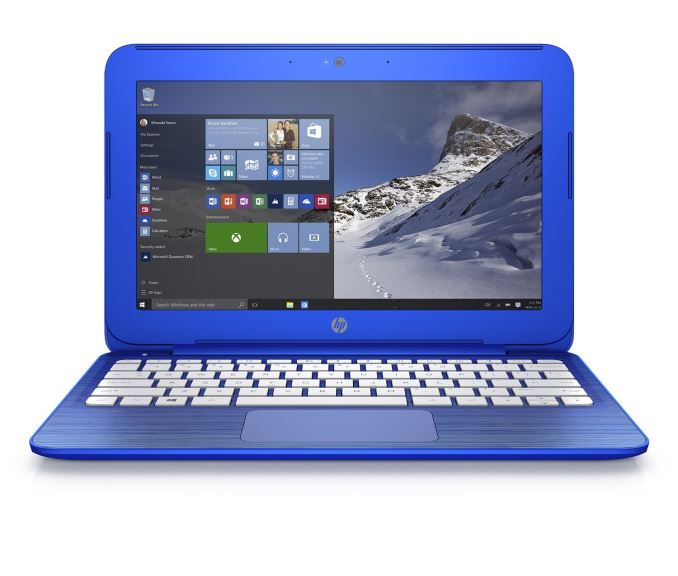
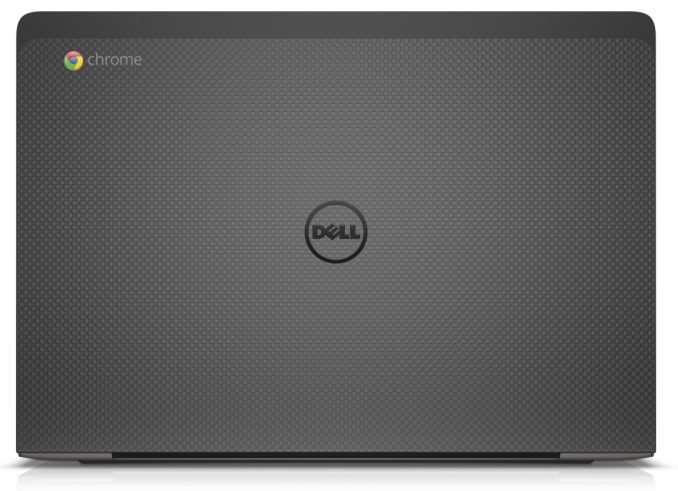
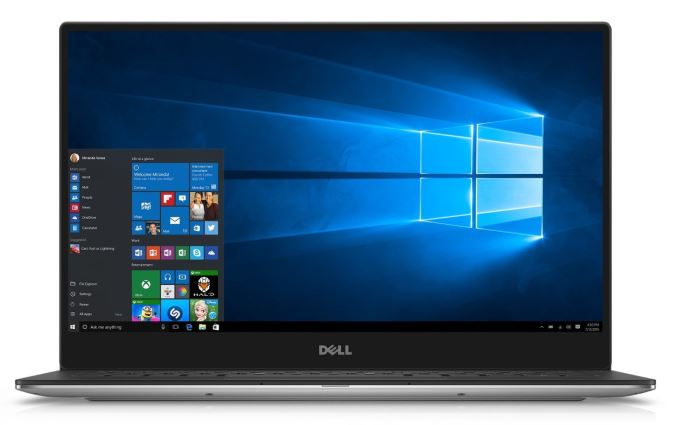
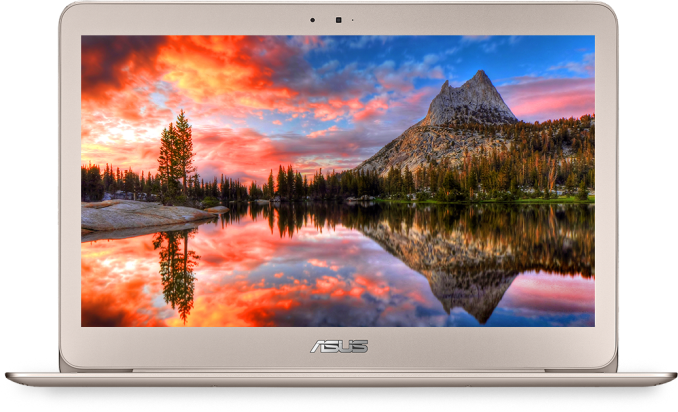


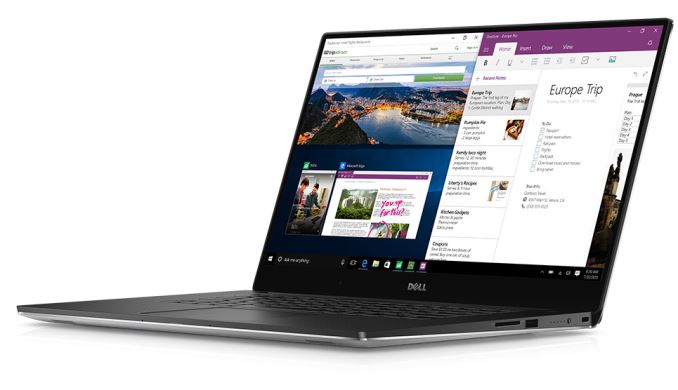


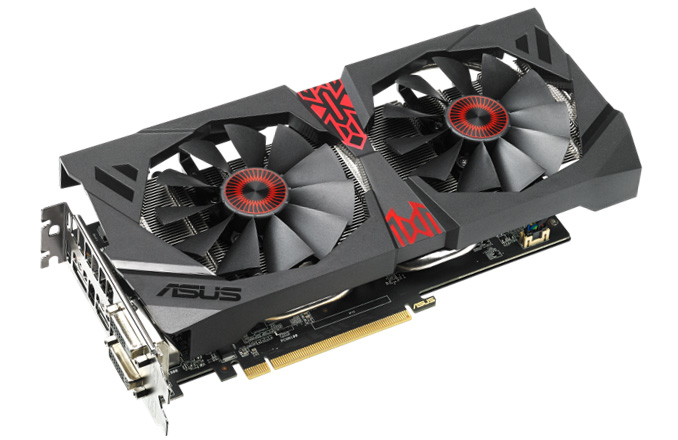
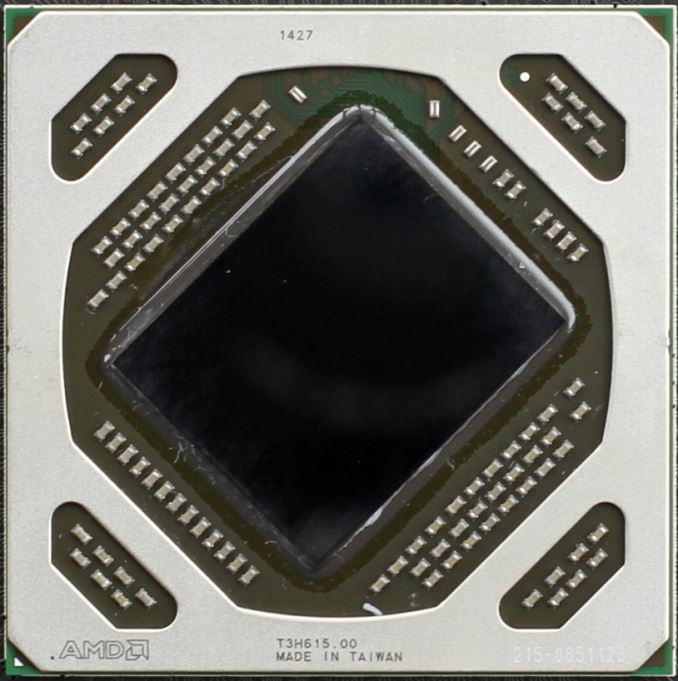
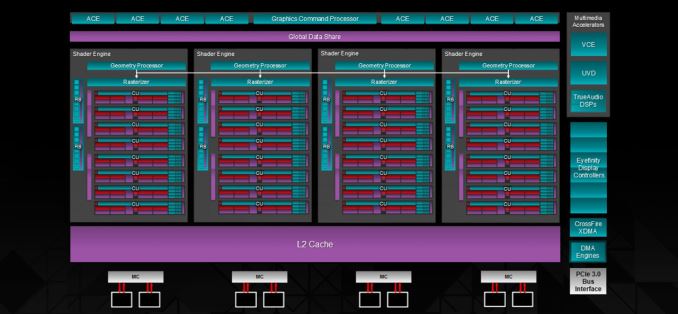
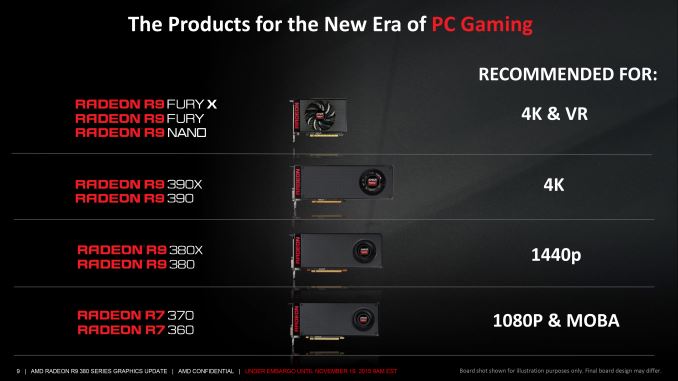
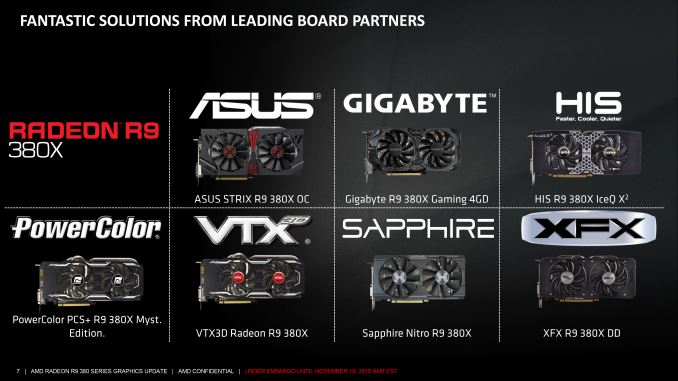
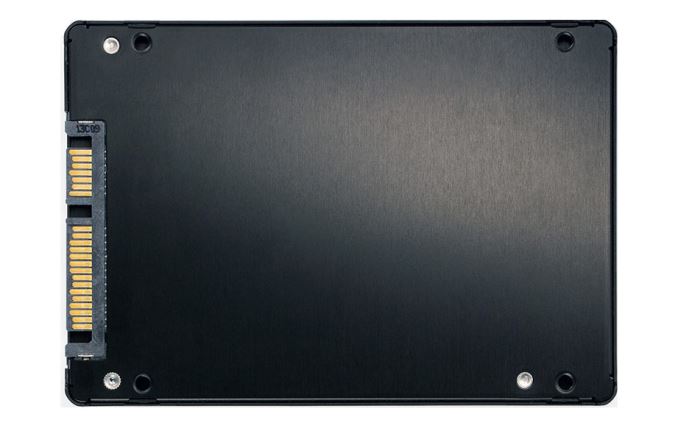
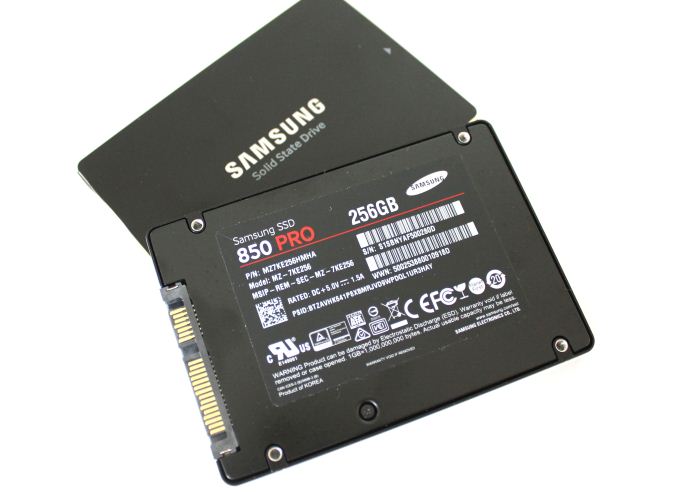
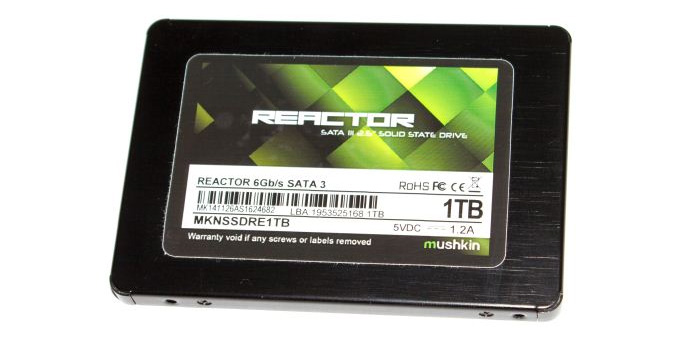
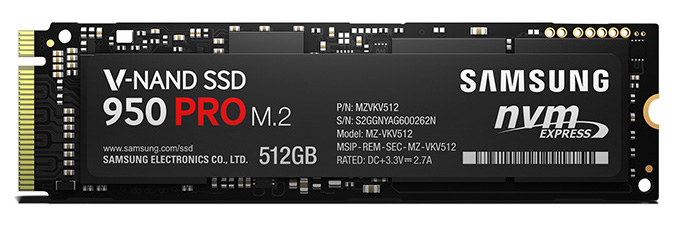
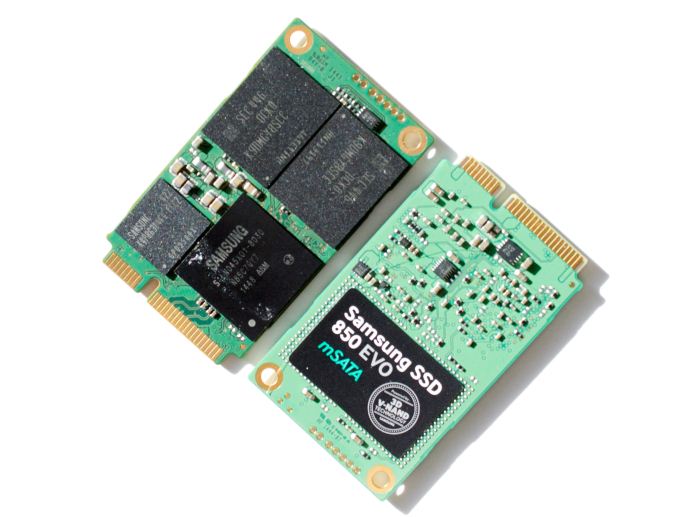

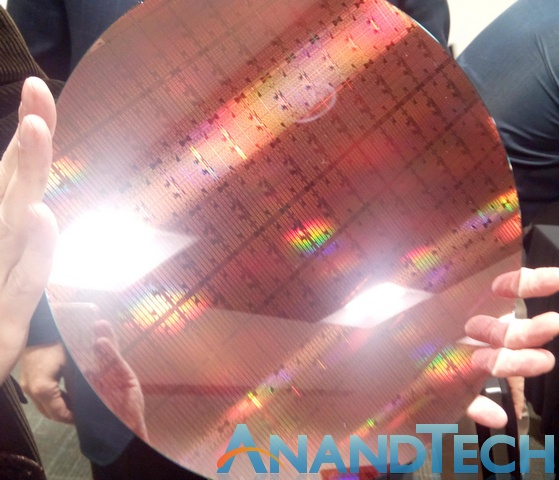
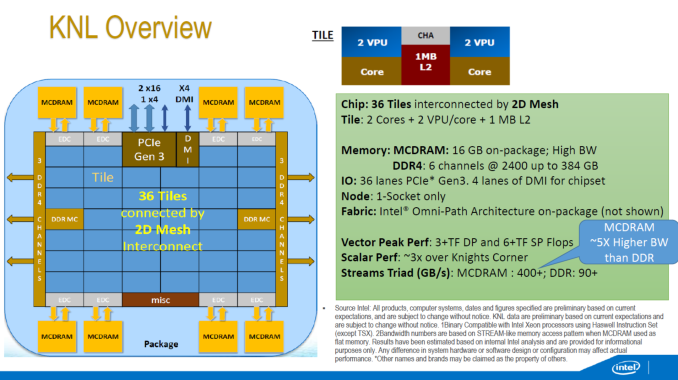
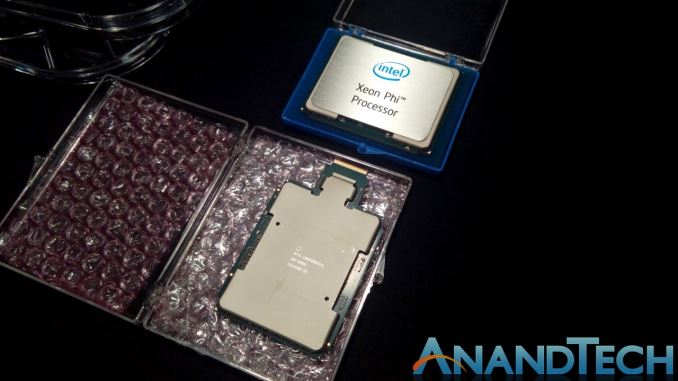

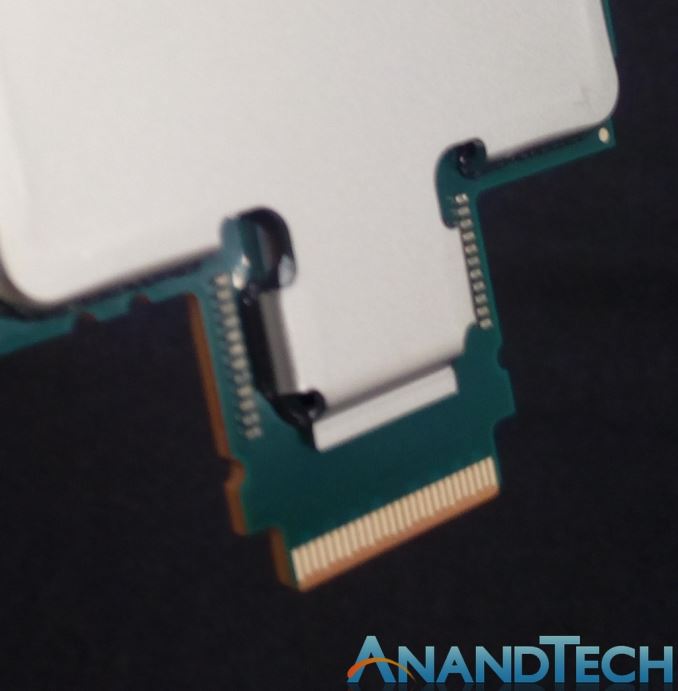
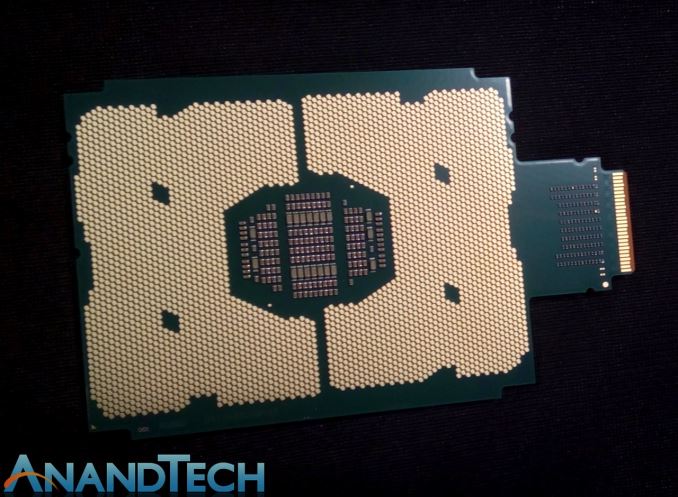

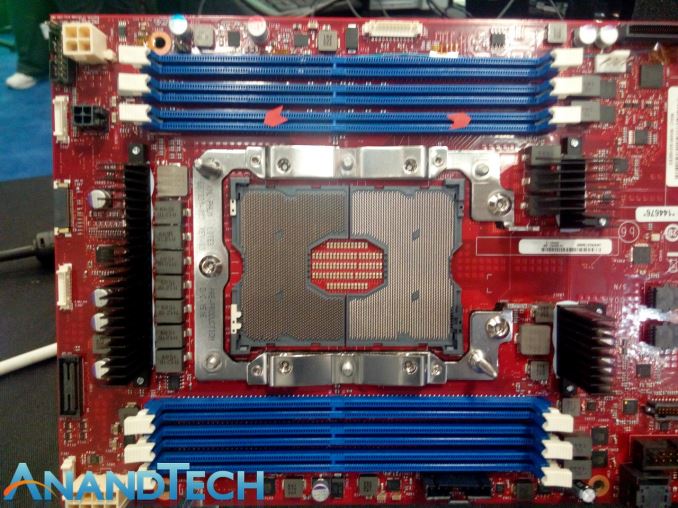
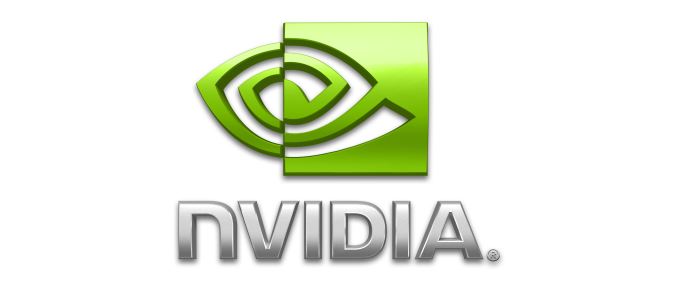
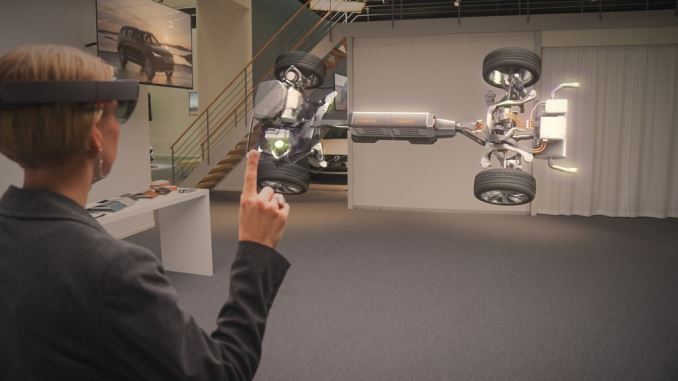

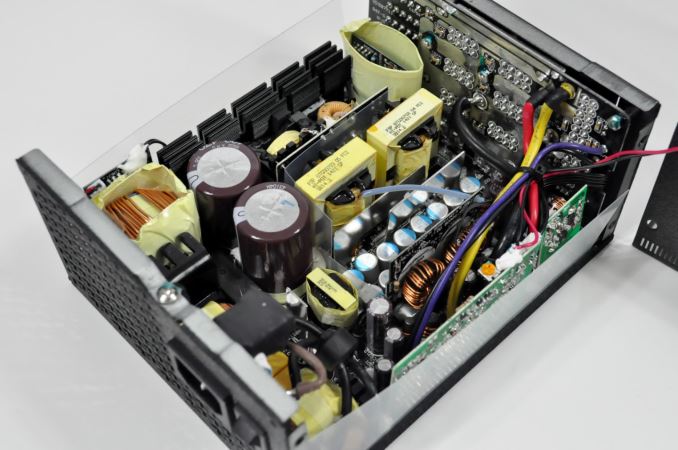
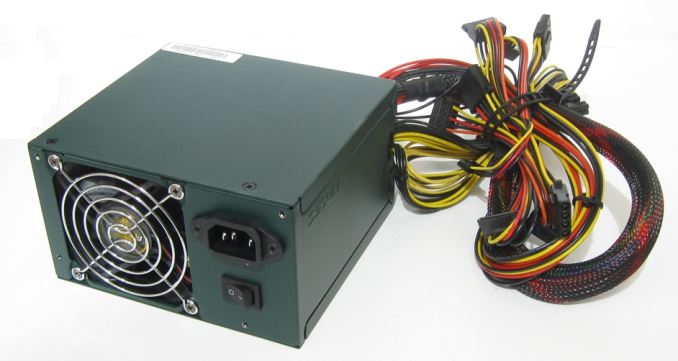
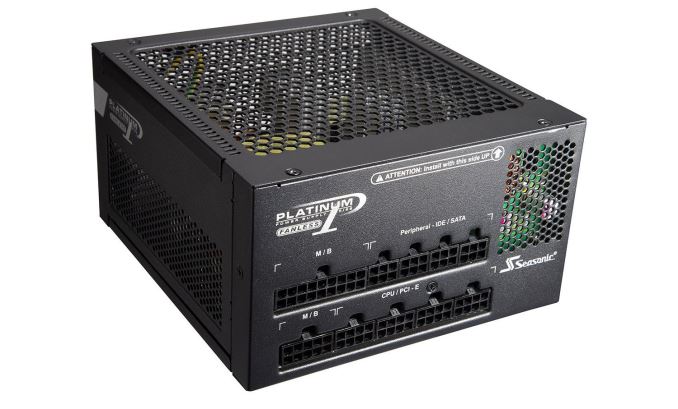
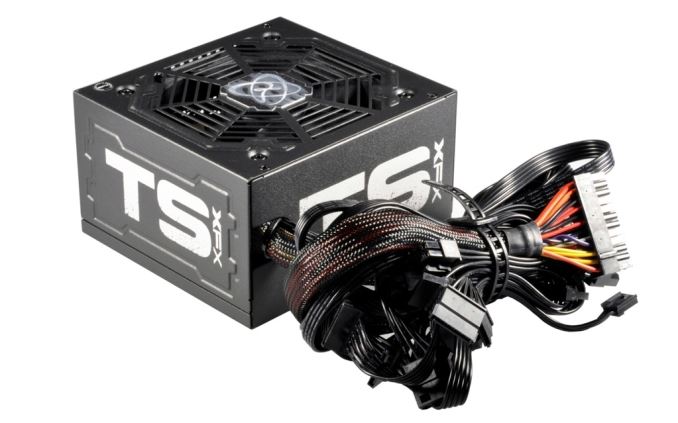
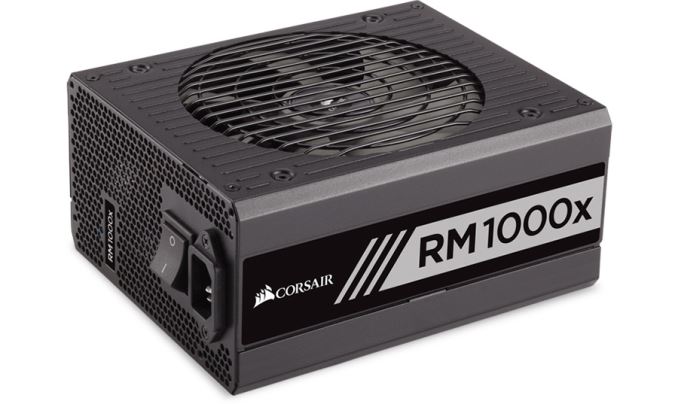
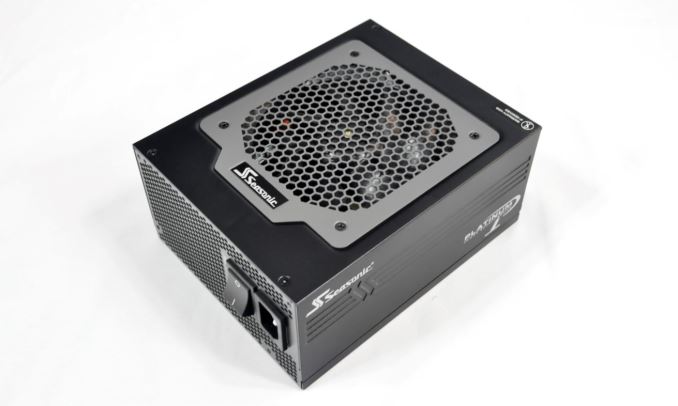
















Bookmarks